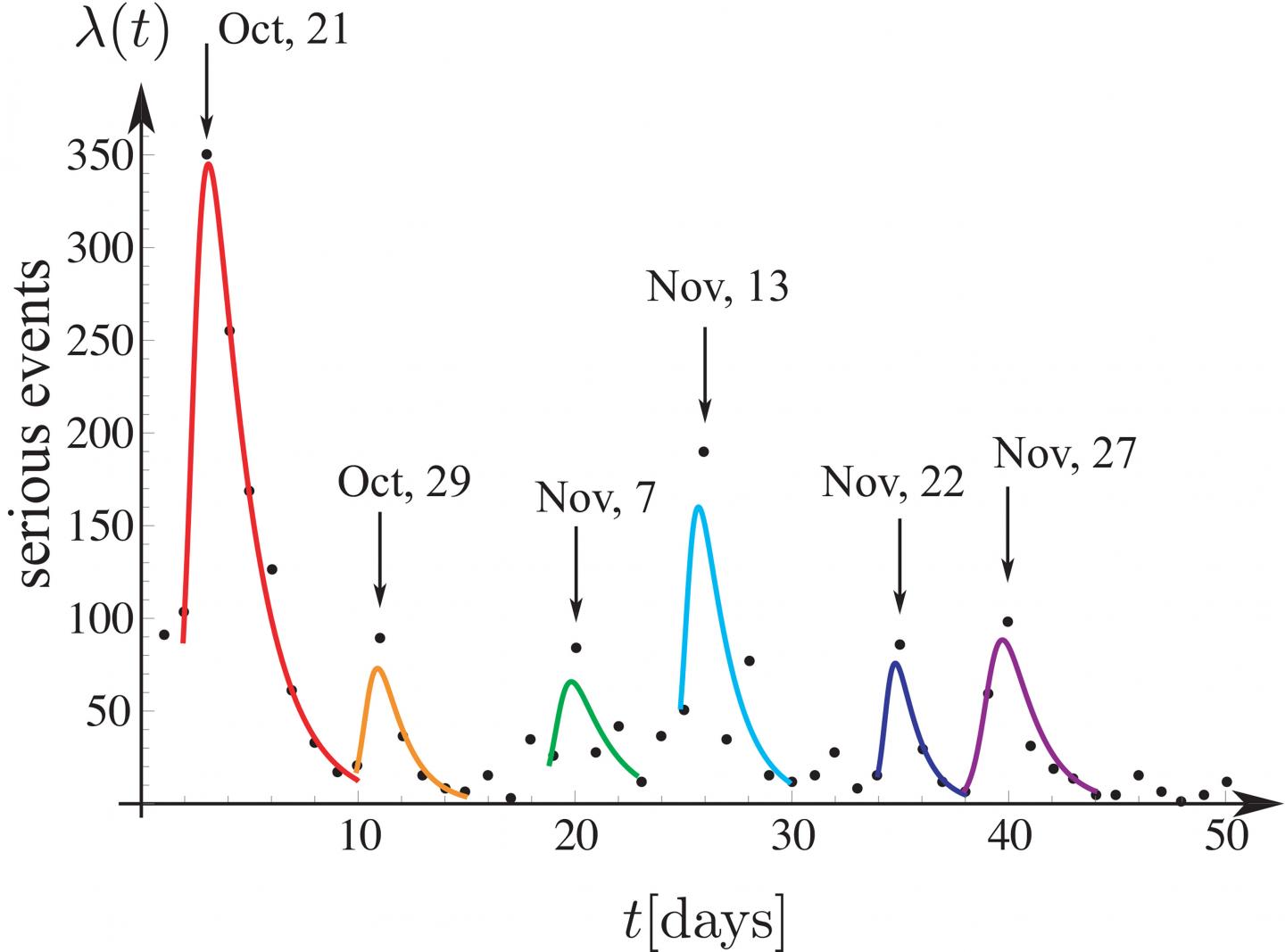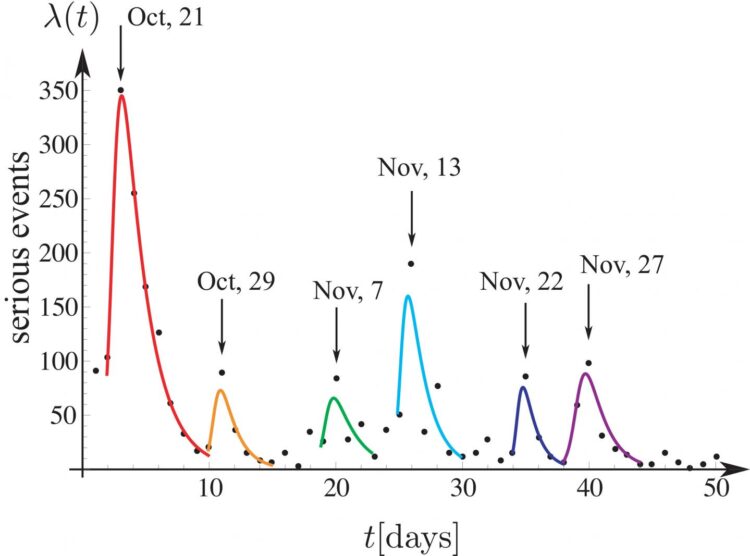Exploring episodes of social unrest and rioting, discovering a way to model its spread

Credit: Sergio Rica Mery
WASHINGTON, July 21, 2020 — Episodes of social unrest rippled throughout Chile in 2019 and disrupted the daily routines of many citizens. Researchers specializing in economics, mathematics and physics in Chile and the U.K. banded together to explore the surprising social dynamics people were experiencing.
To do this, they combined well-known epidemic models with tools from the physics of chaos and interpreted their findings through the lens of social science as economics.
In the journal Chaos, from AIP Publishing, the team reports that social media is changing the rules of the game, and previously applied epidemic-like models, on their own, may no longer be enough to explain current rioting dynamics. Using epidemiological mathematical models to understand the spread of infectious diseases dates back more than 100 years.
“In the 1970s, this type of methodology was used to understand the dynamics of riots that occurred in U.S. cities in the 1960s,” said Jocelyn Olivari Narea, co-author and an assistant professor at Adolfo Ibáñez University in Chile. “More recently, it was used to model French rioting events in 2005.”
From a mathematical point of view, the team’s work is based on the SIR epidemiological model, known for modeling infectious disease spread. This technique separates the population into susceptible, infectious and recovered individuals.
“Within a rioting context, someone ‘susceptible’ is a potential rioter, an ‘infected individual’ is an active rioter, and a ‘recovered person’ is one that stopped rioting,” explained co-author Katia Vogt-Geisse. “Rioting spreads when effective contact between an active rioter and a potential rioter occurs.”
They discovered that the SIR model uses Hamiltonian mechanics for mathematics, just like Newton’s laws for physics.
“This allowed us to apply well-known tools of the physics of chaos to show that within the presence of an external force, the dynamics become very rich,” said co-author Sergio Rica Mery. “The external force that we included in the model represents the occasional trigger that increases rioting activity.”
When including such triggers, the team found the way a sequence of events occurs varies greatly based on the initial number of potential rioters and active rioters.
“Even the sequence of rioting events can be chaotic,” Rica Mery said. “Rich dynamics reveal the complexity involved in making predictions of rioting activity.”
The team’s work comes at a timely moment as social unrest is becoming more common –even within the context of the current pandemic.
“We just saw episodes of rioting in Minnesota due to racial unrest and how it ended up spreading to various locations within the U.S. and even abroad,” Olivari Narea said.
The team pointed out it was surprising that the idea of disease spread can be well applied to rioting activity spread to obtain a good fit of rioting activity data.
“While you might think that the study of disease transmission and problems of a social nature vary greatly, our work shows epidemiological models of the most simple SIR type, enriched by triggers and tools of the physics of chaos, can describe rioting activities well,” Vogt-Geisse said.
###
The article, “The anatomy of the 2019 Chilean social unrest,” is authored by Paulina Caroca, Carlos Cartes, Toby P. Davies, Jocelyn Olivari, Sergio Rica and Katia Vogt-Geisse. It will appear in Chaos, July 21, 2020 (DOI: 10.1063/5.0006307). After that date, it can be accessed at https:/
ABOUT THE JOURNAL
Chaos is devoted to increasing the understanding of nonlinear phenomena in all areas of science and engineering and describing their manifestations in a manner comprehensible to researchers from a broad spectrum of disciplines. See https:/
Media Contact
Larry Frum
[email protected]
Related Journal Article
http://dx.





